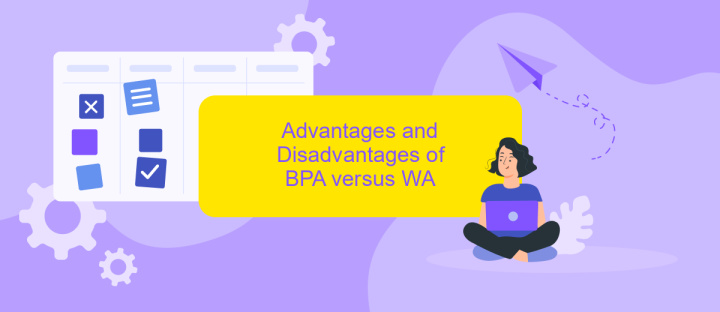Business Process Automation vs Workflow Automation
In the modern business landscape, efficiency and productivity are paramount. Business Process Automation (BPA) and Workflow Automation (WFA) are two key strategies organizations employ to streamline operations. While both aim to enhance performance and reduce manual effort, they serve distinct purposes and are implemented differently. This article explores the differences between BPA and WFA, helping you determine which approach best suits your needs.
Introduction to Business Process Automation (BPA) and Workflow Automation (WA)
Business Process Automation (BPA) and Workflow Automation (WA) are two critical components in modern organizational efficiency. While both aim to streamline operations, they serve distinct purposes. BPA focuses on automating complex, multi-step business processes, often integrating various systems and applications. WA, on the other hand, deals with the automation of specific tasks within a process, enhancing productivity and reducing manual intervention.
- Business Process Automation (BPA): Automates end-to-end business processes.
- Workflow Automation (WA): Streamlines individual tasks within a process.
- Integration: Tools like ApiX-Drive facilitate seamless integration between different systems.
Understanding the differences and synergies between BPA and WA is essential for organizations aiming to optimize their operations. By leveraging tools such as ApiX-Drive, businesses can ensure that their processes are not only automated but also well-integrated, leading to improved efficiency and reduced operational costs.
Understanding the Key Differences between BPA and WA

Business Process Automation (BPA) and Workflow Automation (WA) are often used interchangeably, but they serve distinct purposes. BPA focuses on automating entire business processes, aiming to optimize and streamline operations across various departments. It involves complex integrations and can include multiple workflows, systems, and applications. For instance, services like ApiX-Drive can be instrumental in setting up these integrations, ensuring seamless data flow between different platforms.
On the other hand, Workflow Automation is more specific and targets individual tasks within a process. WA aims to improve efficiency by automating repetitive tasks, thereby reducing manual effort and minimizing errors. While BPA is more comprehensive and strategic, WA is tactical and focuses on immediate task-level improvements. Understanding these key differences helps businesses choose the right approach to enhance productivity and achieve their operational goals.
Advantages and Disadvantages of BPA versus WA

Business Process Automation (BPA) and Workflow Automation (WA) are essential tools for enhancing efficiency in organizations. While both aim to streamline operations, they have distinct advantages and disadvantages.
- Scope: BPA covers entire business processes, integrating various systems and departments, whereas WA focuses on automating specific tasks within a workflow.
- Complexity: BPA is generally more complex to implement and requires significant investment in time and resources. WA, on the other hand, is easier to set up and can be quickly adapted to changing needs.
- Flexibility: BPA offers greater flexibility and scalability, making it ideal for large enterprises. WA is more suited for smaller projects or departments.
- Integration: BPA often requires sophisticated integration tools like ApiX-Drive to connect various systems seamlessly. WA typically involves fewer integrations, making it simpler but less comprehensive.
- Cost: BPA is usually more expensive due to its broad scope and complexity. WA is more cost-effective, especially for smaller businesses.
In summary, the choice between BPA and WA depends on the organization's size, needs, and resources. BPA is ideal for comprehensive, long-term solutions, while WA is better for quick, task-specific automation.
Choosing the Right Solution for Your Organization

When choosing between Business Process Automation (BPA) and Workflow Automation (WFA) for your organization, it's essential to understand the distinct benefits each solution offers. BPA focuses on automating entire business processes, integrating various systems, and optimizing complex workflows. On the other hand, WFA is more about streamlining individual tasks and ensuring that specific workflows are carried out efficiently.
Consider the scale and complexity of your needs. If your organization requires comprehensive automation that spans multiple departments and involves various systems, BPA might be the right choice. Conversely, if you need to automate repetitive tasks within a specific workflow, WFA could be more suitable.
- Assess the complexity of your processes.
- Identify the scope of automation required.
- Evaluate integration needs with existing systems.
- Consider the scalability of the solution.
Tools like ApiX-Drive can simplify the integration process, making it easier to connect different software and services within your automation strategy. By carefully evaluating your organization's specific requirements and goals, you can select the solution that best aligns with your operational needs and drives efficiency.
Best Practices for Implementing BPA and WA
When implementing Business Process Automation (BPA) and Workflow Automation (WA), it is essential to start with a thorough analysis of your current processes. Identify repetitive tasks and bottlenecks that can be automated to improve efficiency. Engage stakeholders from various departments to ensure that the automation solutions align with organizational goals. Documenting workflows and setting clear objectives will provide a roadmap for successful implementation. Additionally, selecting the right tools is crucial; platforms like ApiX-Drive can facilitate seamless integration between different software systems, ensuring smooth data flow and interoperability.
Another best practice is to start small and scale gradually. Begin with automating simple tasks to demonstrate quick wins and build momentum. This approach allows for troubleshooting and adjustments without overwhelming the system. Providing adequate training and support to employees is also vital to ensure they are comfortable with the new technology. Regularly monitor and evaluate the performance of the automated processes to identify areas for improvement. Continuous feedback loops will help in refining the system for optimal performance and achieving long-term success.


FAQ
What is the difference between Business Process Automation (BPA) and Workflow Automation?
Can BPA and Workflow Automation be used together?
What are the benefits of Business Process Automation?
How can Workflow Automation improve my business operations?
What tools can I use to implement BPA and Workflow Automation?
Time is the most valuable resource for business today. Almost half of it is wasted on routine tasks. Your employees are constantly forced to perform monotonous tasks that are difficult to classify as important and specialized. You can leave everything as it is by hiring additional employees, or you can automate most of the business processes using the ApiX-Drive online connector to get rid of unnecessary time and money expenses once and for all. The choice is yours!

